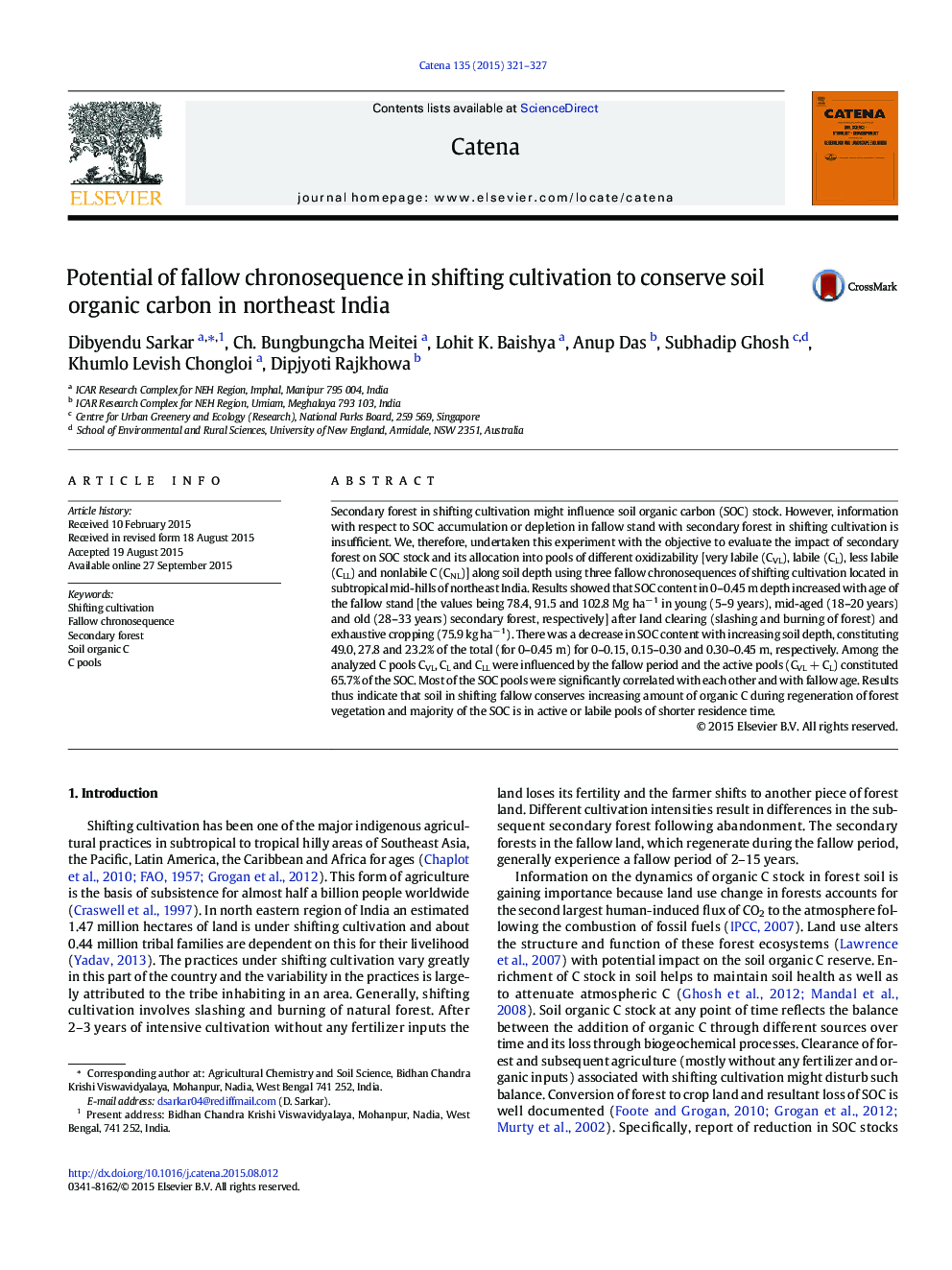| Article ID | Journal | Published Year | Pages | File Type |
|---|---|---|---|---|
| 4571104 | CATENA | 2015 | 7 Pages |
•Soil organic C stock increases with age of the fallow stand after shifting cultivation.•Rate of C build-up in soil is lower in the young fallow than that in the older one.•The active pools constitute 65.7% of the soil organic C.
Secondary forest in shifting cultivation might influence soil organic carbon (SOC) stock. However, information with respect to SOC accumulation or depletion in fallow stand with secondary forest in shifting cultivation is insufficient. We, therefore, undertaken this experiment with the objective to evaluate the impact of secondary forest on SOC stock and its allocation into pools of different oxidizability [very labile (CVL), labile (CL), less labile (CLL) and nonlabile C (CNL)] along soil depth using three fallow chronosequences of shifting cultivation located in subtropical mid-hills of northeast India. Results showed that SOC content in 0–0.45 m depth increased with age of the fallow stand [the values being 78.4, 91.5 and 102.8 Mg ha− 1 in young (5–9 years), mid-aged (18–20 years) and old (28–33 years) secondary forest, respectively] after land clearing (slashing and burning of forest) and exhaustive cropping (75.9 kg ha− 1). There was a decrease in SOC content with increasing soil depth, constituting 49.0, 27.8 and 23.2% of the total (for 0–0.45 m) for 0–0.15, 0.15–0.30 and 0.30–0.45 m, respectively. Among the analyzed C pools CVL, CL and CLL were influenced by the fallow period and the active pools (CVL + CL) constituted 65.7% of the SOC. Most of the SOC pools were significantly correlated with each other and with fallow age. Results thus indicate that soil in shifting fallow conserves increasing amount of organic C during regeneration of forest vegetation and majority of the SOC is in active or labile pools of shorter residence time.
